You’re drawn to the night sky above Phoenix, eager to explore its celestial wonders.
Yet, navigating the best stargazing spots and understanding the cosmic landscape can be overwhelming, especially considering so many options and details.
I guide you through Phoenix’s top stargazing locations, offer practical tips for your adventure, and introduce you to the joys of night sky observation. By the end of this article, you’ll be ready to embrace the stars with confidence and curiosity.
Key Things to Know
- Explore the best stargazing spots in Phoenix, from Tempe Town Lake to dark sky parks near the city.
- Utilize tips for optimal viewing, including bringing the right gear and checking weather conditions.
- Engage with local astronomy clubs for events and resources.
Recommended For You
Best Stargazing Phoenix Spots
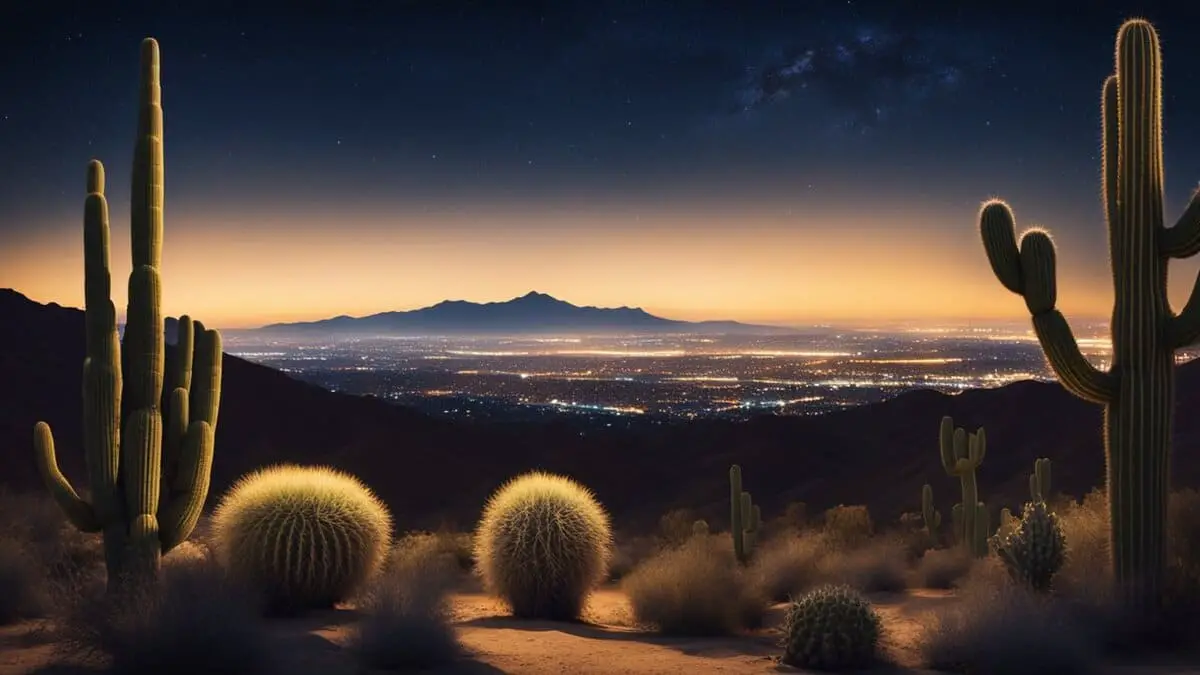
Phoenix has captivated me with its awesome places to explore the stars.
In my years of stargazing here, I’ve found some spots that are nothing short of magical.
- Tempe Town Lake: Perfect for beginners, you can join a stargazing class and learn the ropes right in the heart of Tempe. Address: 80 E. Rio Salado Pkwy, Tempe, AZ 85281
- Lake Pleasant: This is a local favorite for space and nature lovers. The clear skies here make it an excellent spot for stargazing.
- Resorts in Scottsdale: Some resorts in Scottsdale provide the perfect backdrop for stargazing. Plus, you can enjoy a hot stone massage!
Remember to:
- Bring a blanket or chair to get comfy.
- Take a telescope if you have one. If not, binoculars or your eyes are still great.
- Check the weather to make sure the skies are clear.
Phoenix Observatories and Planetariums
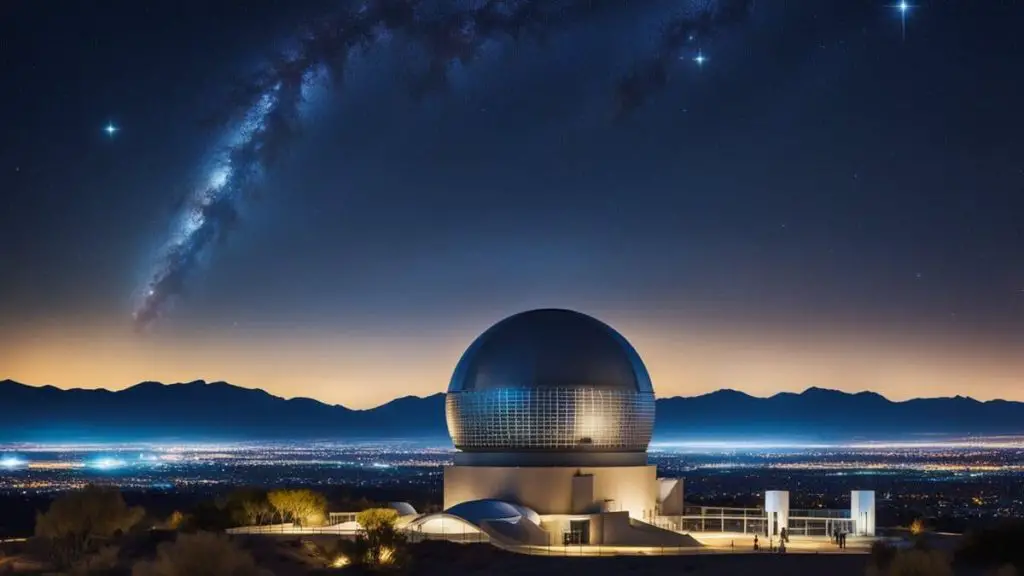
Phoenix is home to unique places to explore the night sky, like Lowell Observatory and various planetariums. You’ll find lots to do, from telescopes to guided tours under the stars.
Visiting Lowell Observatory
Lowell Observatory in Flagstaff is not just an observatory; it’s a piece of space history.
Here’s what you can look forward to:
- Gazing at distant galaxies through powerful telescopes.
- Learning about the stars from knowledgeable guides.
To make the most of your visit:
- Check the observatory’s schedule for special events.
- Dress warmly, as nights can get chilly.
Activities at Arizona Planetariums
Your adventure into the cosmos continues at Arizona’s planetariums.
They offer exciting ways to see the sky:
- Stunning shows that take you across the universe.
- Interactive exhibits that bring space science to life.
Tips for a great planetarium visit:
- Arrive early to get the best seat for the show.
- Ask questions; the staff loves to share their knowledge.
Dark Sky Destinations near Phoenix
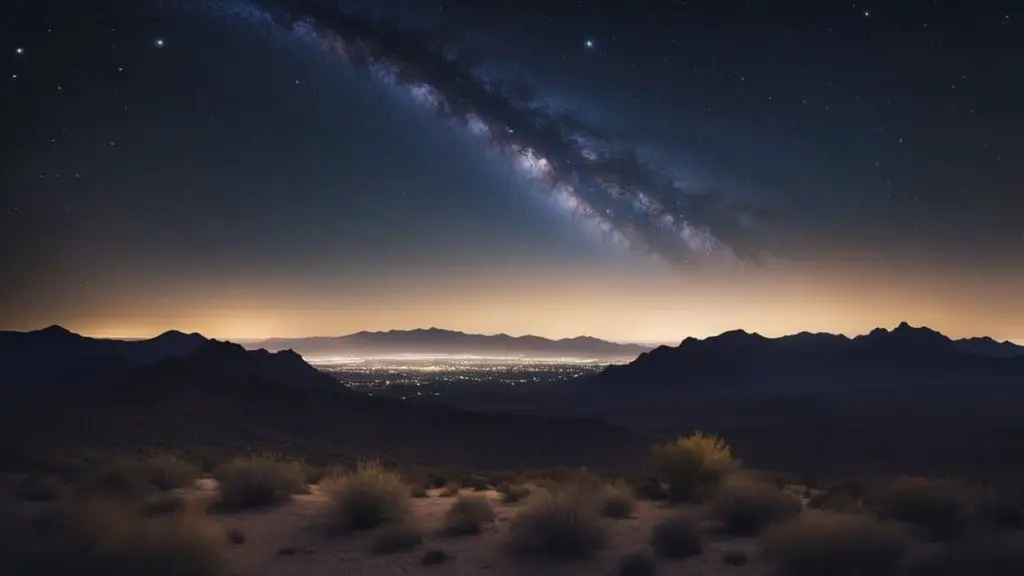
Phoenix is surrounded by some of the best dark sky places in America. These spots are perfect if you love stargazing and want to see the stars without city lights.
Dark Sky Parks in Arizona
Arizona takes pride in its dark sky parks. These areas are known for their pure darkness, which makes stars shine bright.
Here are parks near Phoenix where the night sky will wow you:
- Grand Canyon National Park: At Grand Canyon National Park, I’ve spent countless hours under a star-filled sky in awe of the cosmos. The canyon’s grandeur beneath the vast starry sky is a sight.
- Tonto National Forest: Not too far from the city lights, this forest offers a dark sky experience you can’t miss.
Remember to check park schedules for public stargazing events, too.
FREE STARGAZING CHECKLIST
My 5-page Stargazing Checklist will enhance your astronomical observations.
Follow this free checklist to navigate the night sky with confidence, clarity, and a sense of preparedness for a rewarding stargazing experience.

Preserving Night Skies at National Monuments
You can also explore historical sites under the stars.
Here’s what you should know:
- Wupatki National Monument: It’s not just about daytime history here; night skies are just as rich. The stars are bright against the backdrop of ancient pueblos.
Tips for Your Stargazing Trip:
- Bring a blanket or a chair to be comfy.
- Use red lights to keep your night vision sharp.
Navigating the Phoenix Night Sky
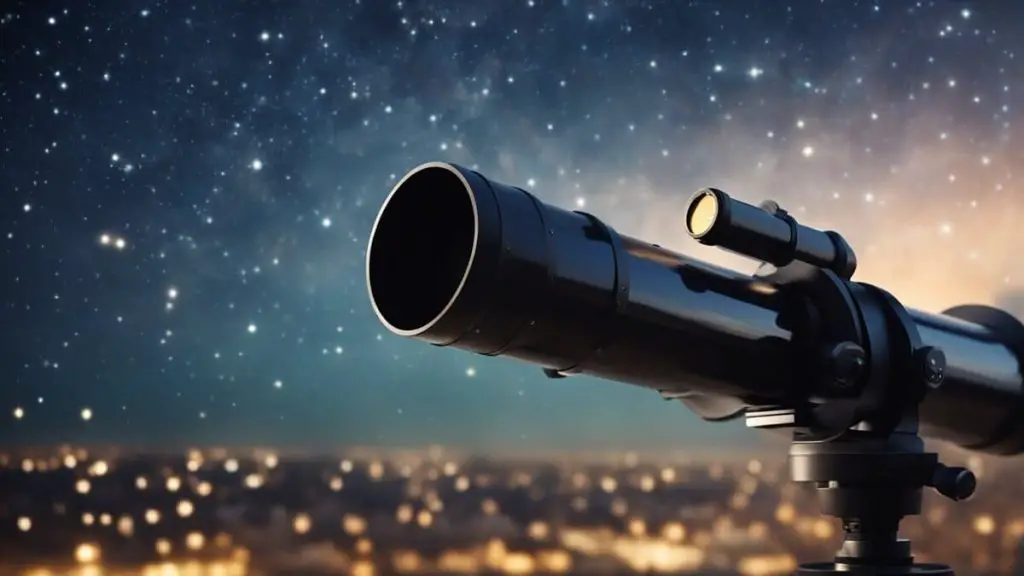
You can discover a whole new world by looking up at the night sky in Phoenix. With just your eyes, a map, and maybe a telescope, you’re ready to start exploring.
Identifying Constellations
Identifying constellations is like finding pictures in a giant cosmic dot-to-dot. The thrill of recognizing Orion or Cassiopeia for the first time was unforgettable.
Here are simple steps to help you start:
- Find the North Star: It’s part of the Little Dipper’s handle and lets you figure out which way is north.
- Use a Sky Map: Apps or paper maps show you what constellations are in the sky at any given time.
- Look for Patterns: Common constellations to spot include Orion, Ursa Major, and Cassiopeia.
Jupiter and Saturn are often the brightest objects after the moon, so they can guide you to their neighboring constellations.
Tracking Planets and Stars
Planets and stars move in predictable patterns, which makes them easier to track.
- Spot the Planets: Planets don’t twinkle like stars and follow a line across the sky called the ecliptic.
- Notice the Brightness: The brightness of planets changes with their positions in relation to Earth and the Sun. The closer they are, the brighter they appear.
Phoenix Astronomy Resources

Phoenix offers a vibrant night sky and supportive communities to explore the cosmos and meet fellow astronomy enthusiasts. You’ll find clubs and resources that make stargazing accessible, whether you’re a seasoned astronomer or just starting.
The Cosmic Tapestry Above Phoenix
The night sky in Phoenix is a stunning view, thanks to areas with reduced light pollution. To appreciate the stars, you should find spots away from city lights.
Here are some prime locations:
- South Mountain Park: Clear sky views after dark.
- Estrella Mountain Regional Park: Great for seeing constellations.
Phoenix Astronomy Clubs
You’re never alone in your love for the stars in Phoenix. Joining an astronomy club can enhance your stargazing experience.
Check out these clubs for fun and learning:
- Phoenix Astronomical Society: They offer stargazing events and are a wealth of knowledge for beginners and advanced stargazers.
- East Valley Astronomy Club in Mesa: If you’re closer to Mesa, this club’s for you. They have star parties and allow you to get hands-on with telescopes.
Local resources include the Tucson Amateur Astronomy Association, known for its educational outreach and community programs. They often answer FAQs and help you understand what you see in the night sky.
Upcoming Celestial Events
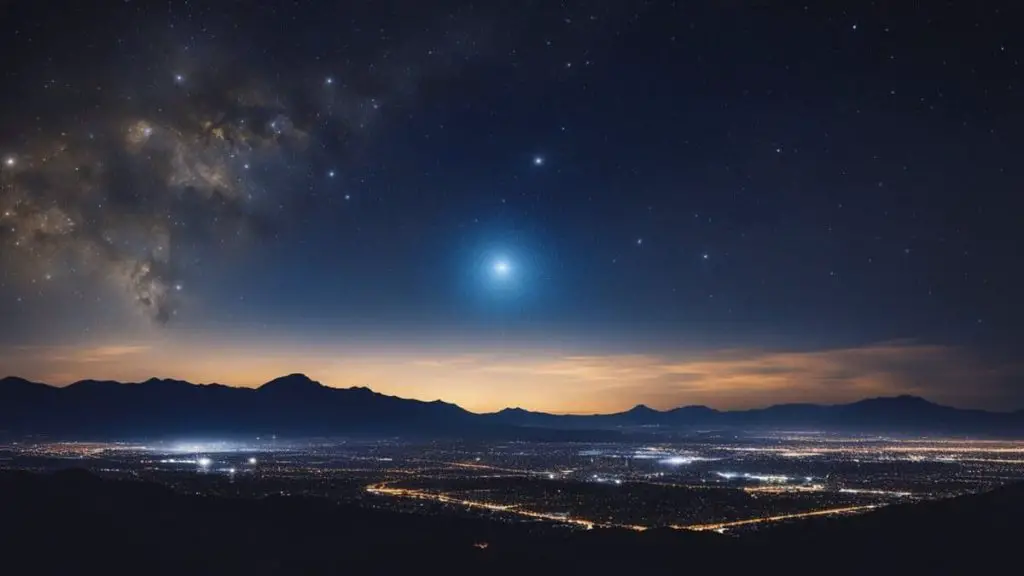
Arizona’s night sky brings you a front-row seat to nature’s most incredible shows. Here’s what you’re in for.
Meteor Showers and Eclipses in Arizona
Arizona skies are famous for their clarity, and 2024 is packed with events you won’t want to miss.
Meteor Showers:
- Catch the Quadrantid meteor shower. It’s one of the best meteor showers to observe in the year.
- Look out for more showers as the year progresses, providing stunning light displays against the dark desert backdrop.
Eclipses:
- A total solar eclipse occurs a spectacle where the moon completely covers the sun. It’s a rare sight and definitely worth your time.
Stargazing Events Calendar
Here’s a quick list to help you catch these celestial happenings:
- Mark January in your calendar for the Quadrantid meteor shower.
- Plan for the total solar eclipse; it’s a must-see that only happens sometimes.
- Throughout the year, look for announcements on local observations and gatherings. You’ll find them, especially in stargazing hotspots like Estrella Mountain Park.
Stay tuned to the happenings above. You’ll have the chance to witness some amazing astronomical events from Phoenix. Remember to check the detailed calendar to know the best times for each event. Then, grab your blanket and head out for an unforgettable night under the stars.
Stargazing Adventures and Activities
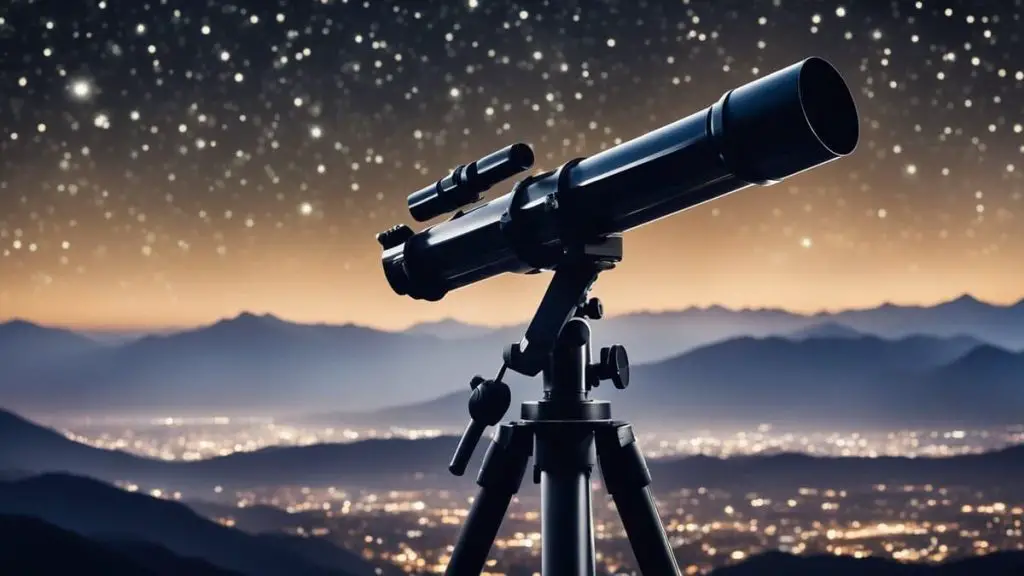
Phoenix offers unique nighttime adventures that combine the desert’s beauty with the cosmos’ splendor. Gear up for Jeep tours under the stars and camping experiences that take you closer to the night sky.
Jeep and Hiking Trips at Night
Navigate the desert at night on a Jeep tour for an unforgettable stargazing experience. Along the way, you’ll encounter fascinating wildlife that thrives under the cover of darkness.
What to Expect:
- An off-road adventure in a Jeep.
- A chance to see nocturnal animals.
- Guides who can point out constellations.
Stargazing Enhanced Outdoor Camping
Camping under Phoenix’s night sky is remarkable. You get more than just a tent and campfire—you get a front-row seat to a celestial show with clear views of stars and planets.
Camping Tips:
- Choose a site with minimal light pollution.
- Bring a telescope or binoculars for better viewing.
- Pay attention to scheduled celestial events for an enhanced experience.
Astronomical Equipment and Use

Choosing the right tools for stargazing in Phoenix can make your experience unforgettable. My journey in choosing the right telescope was a pivotal moment in my stargazing adventures.
Let’s get you ready for a night under the stars with the perfect gear.
Choosing the Right Telescope
A telescope is your window to the cosmos.
Here’s how to find one that fits your stargazing needs:
- Ease of Use: You want a simple telescope to handle and set up.
- Portability: If you plan to travel to dark sky spots, your telescope should be easy to carry.
- Price: Telescopes come in various prices, so consider how much you’re willing to spend.
Telescopes vary in size and power, and what works for one stargazer might not suit another.
Benefits of High-Powered Telescopes
High-powered telescopes let you see more details in the night sky.
Here’s why they are great:
- Clear Views: These telescopes can give you a clearer view of planets and stars.
- Deep Sky Objects: They make it possible to see galaxies and nebulas far away.
But, high-powered scopes can be pricier and heavier. So, think about what you want to see and choose accordingly. If you’re starting out, binoculars or a smaller scope might be best for you.
Astrophotography Essentials

Knowing the right astrophotography essentials can help you snap spectacular photos of the Milky Way, nebulas, and galaxies if you’re keen on capturing the stars.
Capturing the Milky Way
To catch the grandeur of the Milky Way in your photos, you’ll need a digital camera with manual settings.
Here’s a simple list to start with:
- A camera capable of high ISO settings
- A lens with a wide aperture (f/2.8 or lower is excellent!)
- A sturdy tripod to keep your camera still
- A remote shutter release to avoid any camera shake
Set your ISO between 3200 and 6400, aperture as wide as it goes, and exposure around 20 seconds. Make sure you’re far from city lights for the best view.
Best Practices for Night Sky Photography
For sharp and clear night sky photos, stick to these best practices:
- Use the rule of 500. Divide 500 by your lens’ focal length to find the longest exposure time before stars blur.
- Focus manually. Use live view mode and zoom in on a bright star to focus.
- Shoot in RAW format for better editing control later on.
Remember to be patient and let your eyes adjust to the dark for a better stargazing and photography experience.
Frequently Asked Questions
What is the best time of year to go stargazing in Phoenix?
The best time of year to stargaze in Phoenix is during the cooler months, from late fall to early spring. During this period, the skies are clearer, and the reduced humidity enhances visibility, making celestial events more vivid.
How can I participate in local stargazing events if I’m a beginner?
If you’re a beginner looking to participate in local stargazing events, consider joining a local astronomy club. These clubs often host events designed for all experience levels. They can provide guidance, equipment, and a welcoming community for newcomers.
Are there any mobile apps that can enhance my stargazing experience in Phoenix?
Yes, several mobile apps are designed to enhance your stargazing experience in Phoenix. Apps like Stellarium, SkyView, and Star Walk can help you identify stars, planets, and constellations in real time by pointing your phone at the sky.
TL;DR
- Phoenix offers exceptional stargazing spots, from urban parks to remote dark sky parks.
- Local observatories and planetariums provide guided tours and educational programs.
- Joining an astronomy club in Phoenix can enhance your stargazing experience with community events and resources.
- Essential gear for stargazing includes a comfortable chair, red lights for night vision, and binoculars or a telescope.
- Upcoming celestial events and the best viewing spots are highlighted, ensuring a memorable stargazing adventure.
Your curiosity fuels our journey through the cosmos together. I may not have all the answers, but I’m eager to share what I know and learn alongside you.
Got a question or a thought? Let’s start a conversation below.




